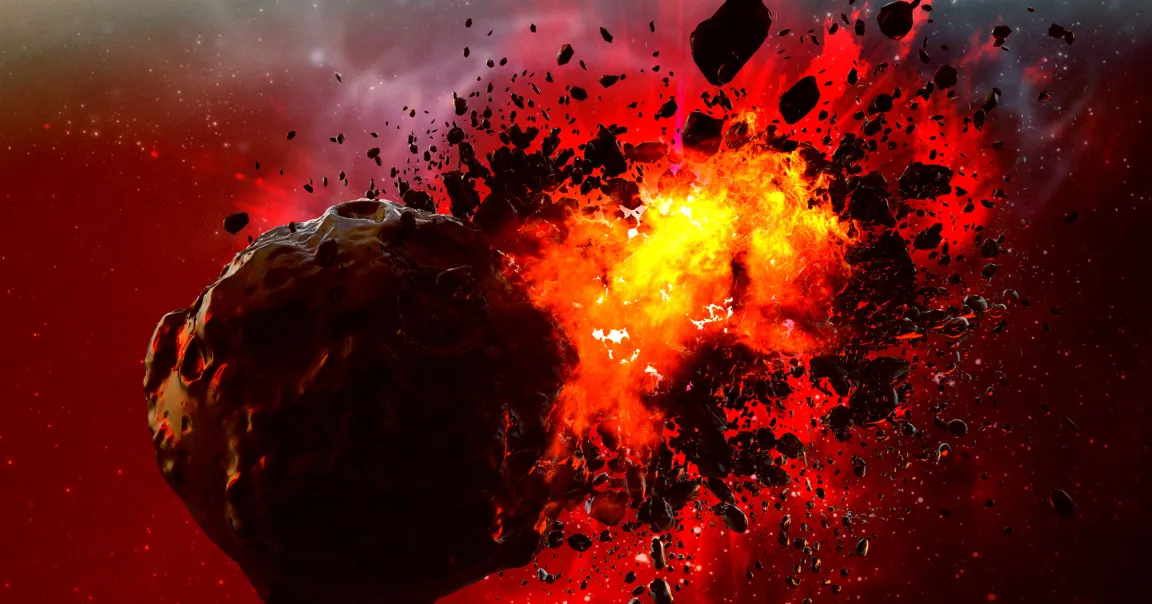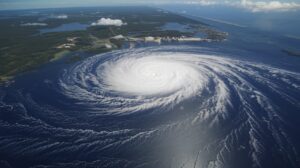Asteroid 2024 YR4 has captured global attention because recent studies suggest it carries a ~4% chance of hitting the Moon in December 2032—even while its threat to Earth has been nearly eliminated. With time ticking and key parameters still uncertain, scientists are now seriously considering using nuclear disruption rather than the less violent kinetic nudges or deflection missions. This article digs into the latest findings, the risks, and why nuking 2024 YR4 might be the most feasible option—and how this strategy could alter planetary defense forever.
What We Know Now About Asteroid 2024 YR4
Asteroid 2024 YR4 was discovered in late 2024 and initially estimated to have a small, but non-negligible, chance (~3%) of colliding with Earth in December 2032. Subsequent observations refined its trajectory, sharply reducing the Earth-impact risk to effectively negligible—but a chance remains of a lunar impact.
Observations from the James Webb Space Telescope and ground-based telescopes indicate its size is around 60 m (±10%) in diameter—about the size of a typical 15-story building. Its mass is still poorly constrained, with estimates ranging widely, depending on density assumptions.

Currently, the Moon-impact probability is assessed at around 4% for December 22, 2032. While that appears small, the potential consequences—especially for satellites, space infrastructure, and micrometeoroid debris in Earth’s vicinity—are sufficient that scientists are exploring mitigation strategies.
Why Deflection May Be Harder Than It Sounds
Deflecting an asteroid means altering its orbit enough so it misses both Earth and the Moon. In principle, this is less violent than blowing it up. But in practice, several obstacles make deflection of 2024 YR4 challenging:
- Uncertainty of mass and density: Because we don’t know exactly how dense the rock is, we can’t know how much force is needed to shift its path. If estimates are off, deflection attempts could be inefficient—or worse, could miscalculate and make problems.
- Tight time window for reconnaissance: Experts suggest that the best window to launch a mission to measure mass and composition—that is, a “reconnaissance” probe—is around late 2028. That leaves very little margin.
- Lower impact force of non-nuclear methods: Traditional kinetic impactors (ramming a spacecraft to impart momentum) work, but require large lead times and accurate targeting. For an asteroid this large, and with limited warning, what’s possible may be marginal.
Thus, while deflection might still be preferred if conditions are ideal, the uncertainty and schedule pressure make more forceful options increasingly attractive.
Nuclear Disruption: What Is Being Proposed
Because of these constraints, scientists are now looking at nuclear disruption—detonating a nuclear device near or on the asteroid—to fragment it or redirect it. Here’s what current proposals suggest:
- Use a nuclear explosive device detonated above or near the surface (a standoff explosion), instead of landing or colliding. This would cause vaporization or ablation of material, which exerts thrust on the asteroid, pushing it off-path.
- Timing matters: analysis suggests a window from late-2029 to late-2031 might be ideal for launching such a nuclear disruption mission. Earlier launch gives more time for refinement; later launches risk delays or insufficient preparation.
- Yield estimates under discussion point toward something on the order of 1 megaton or more, tailored to fragment the asteroid into smaller pieces (ideally <10 meters) so that any generated debris poses far less risk.
Potential Risks & Side Effects
Using nuclear disruption is not without significant risk. Some of the concerns include:
- Fragmentation hazards: Blowing an asteroid apart may create many smaller fragments. If these are not sufficiently small or well-directed, they could still hit the Moon or Earth, or hamper satellites.
- Debris and micrometeoroids: Even if the asteroid doesn’t hit Earth directly, lunar impacts or fragmentation could launch debris (lunar ejecta) toward Earth. One study estimates that a lunar impact could release up to 10⁸ kg of material, possibly increasing micrometeoroid exposure for satellites in Earth orbit.
- Legal, regulatory, and political challenges: The Outer Space Treaty prohibits the placement or use of nuclear weapons in space. There would need to be an international consensus or special legal frameworks for such a mission. There are also concerns about who controls the detonation and how to ensure risk is minimized.
- Uncertainty in execution: If nuclear disruption is attempted without precise knowledge of the asteroid’s structure, there is a risk of planning errors; for example, underestimating how loosely packed (“rubble-pile”) the asteroid is, which could influence how it responds to a nuclear blast.
Why Scientists Think Nukes Could Be the Better Bet for 2024 YR4
Given the constraints above, proponents of the nuclear option argue that for 2024 YR4, nuking may be the most realistic way to guarantee safety. The key reasons:
- Short lead time: With only several years before the potential impact, nuclear disruption offers one of the few options powerful enough to offset uncertainties, especially if we can’t get accurate mass/density soon enough.
- High energy output: Nuclear devices provide far greater energy for altering an asteroid’s path than kinetic impactors (unless those are very large and launched years in advance).
- Preventing lunar impact: Even though Earth is safe, a Moon strike could still have cascading effects—debris, risk to satellites, possibly danger to any lunar infrastructure or operations. The lunar impact risk still exists and merits serious planning. Nuking may be the option that ensures the Moon is spared.
Timelines, Mission Options & What Needs to Happen Next
To mount a successful mission, whether deflection or disruption, several steps must align:
- Reconnaissance mission: Launching in late 2028 to gather accurate data on size, density, composition, and internal structure is vital. If mass and composition are better understood, more precise mission design is possible.
- Nuclear mission window: If going the nuclear route, preparations (design, legal clearances, international cooperation) would likely occupy the late 2029 to late 2031 period. That gives enough time for engineering, testing, and approvals. Futurism
- International cooperation & legal frameworks: Given treaties and public concerns, a nuclear disruption mission would need broader support. Dialogue among space agencies, governments, and international law entities is essential.
- Backup plans: Even with all this, things can go wrong. Having fallback options—e.g., combining smaller kinetic impactors, using a gravity tractor or other less forceful methods—would be prudent.
What Happens If We Do Nothing—or Wait Too Long
If action is delayed or no mission is undertaken, here are some possible outcomes:
- Lunar impact: A 4% chance today means a nonzero risk. If the Moon is struck, the impact could create a crater, eject large amounts of lunar material, and potentially send debris toward Earth or into high Earth orbits. This could temporarily raise the number of micrometeoroid particles in the space environment and damage satellites. arXiv
- Debris hazard increase: Even if no large piece hits Earth, small fragments (from either an impact or later debris fallback) could increase risk to satellites or space station operations.
- Missed opportunity: Taking no action while risk remains may lead to a scenario where options become more limited, costlier, or even impossible as the launch window narrows.
A Balanced Conclusion: Is Nuking the Best Strategy?
Given all the data, nuking asteroid 2024 YR4 is not without risk, but it may offer the best chance to avoid serious damage—especially to the Moon and to satellite infrastructure—under the constraints we face. Deflection remains ideal in many cases, but for 2024 YR4, the narrow time window, uncertain physical properties, and possible outcomes suggest that nuclear disruption should be considered more than just a last resort.
If done correctly, with international cooperation, thorough reconnaissance, and careful planning, a nuclear disruption mission could prevent lunar impact, safeguard orbital assets, and help humanity build a proven method for handling future threats. If done poorly or too late, it could produce unintended consequences.
Given that every day of delay increases uncertainty, the scientific and policy communities should support opening the roadmap now for a potential nuclear mission alongside refining deflection options.
Looking Ahead: What to Watch
- Follow-up observations: Future data (JWST, ground-based telescopes) that tighten the asteroid’s orbit, density, and mass estimates.
- Studies of lunar ejecta: How much debris would escape lunar gravity, how it travels, and what risks it poses to Earth’s orbit.
- International policy decisions: Treaty compliance, agreements for nuclear uses in planetary defense.
- Engineering design: Development of spacecraft, nuclear devices, and launch vehicles suited for deflection or disruption missions.
Conclusion
Asteroid 2024 YR4 presents a rare but real dilemma: Earth is largely safe, but the Moon—and via lunar ejecta, Earth’s space infrastructure—might be in the line of fire if action isn’t taken. For this reason, scientists now believe that nuclear disruption, despite its risks, may represent the only reliable way to prevent a lunar impact given the limited warning time and uncertainties that surround deflection. It’s a high-stakes decision, but one that could define how we defend ourselves—and our celestial neighbourhood—in the decades ahead.
Subscribe to trusted news sites like USnewsSphere.com for continuous updates.





